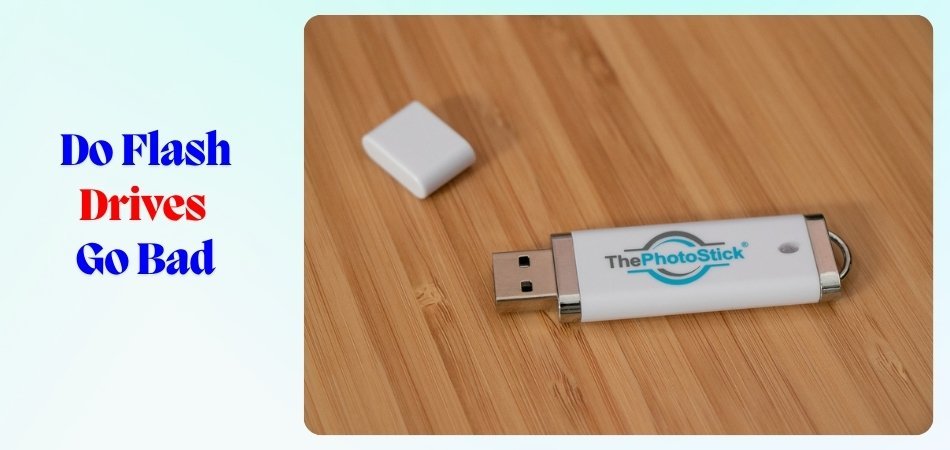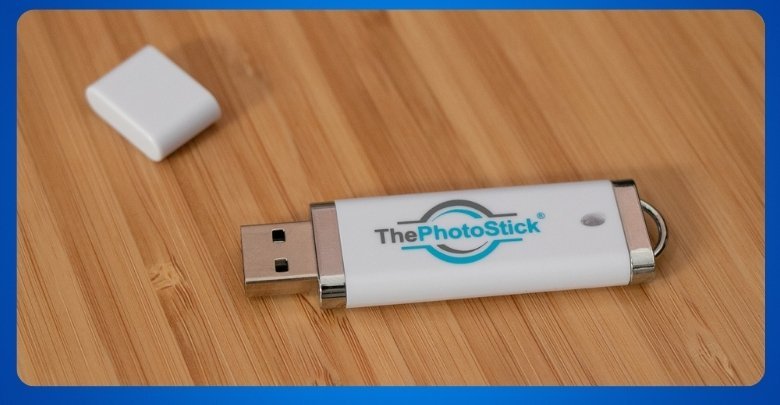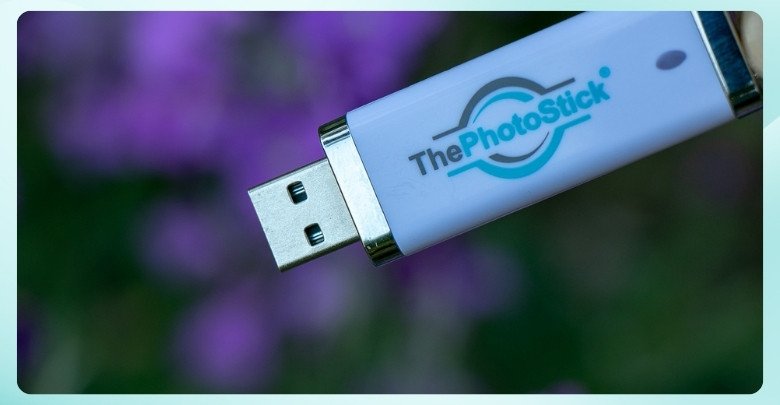You can save and move files like photos, videos, and documents using flash drives. They are easy to carry, simple to use, and work with most computers. Many people use flash drives for school, work, or backup storage. You don’t need a battery or a charger to use one.
But do flash drives go bad?
Yes, they do. Flash drives can stop working after some time. This happens because they can only be used a certain number of times before the memory inside wears out. Also, things like heat, water, or dropping the drive can make it break faster.
Want to know how to take care of your flash drive and make it last longer? Keep reading to find out!
Do Flash Drives Go Bad?
Yes, flash drives go bad after many uses because their memory parts can only work a certain number of times. While they are easy to use and carry, you might wonder if flash drives reliable for backup or not. With careful use and safe storage, they can last longer, but they aren’t the best for long-term backup. There are many reasons why flash drives can stop working. The main causes are summarized below:

Physical Damage
- Flash drives can break if they get hit, dropped, or bent.
- The metal part (USB connector) sticks out and can break easily if something hits it.
- Too much heat, cold, water, or even pets chewing on the drive can also damage it.
Electrical Damage
- Power surges or sudden electricity changes can harm the small parts inside the drive.
- Removing the flash drive without clicking “eject” on the computer can also damage it.
- Leaving the drive plugged in too long can cause it to heat up and stop working.
Broken Parts Inside
- Flash drives have many tiny parts, like chips and controllers. These parts can stop working overtime.
- Heat or poor quality can make the chips come loose from the board.
- If the main chip (called the controller) breaks, the drive may stop working completely.
File and Data Problems
- If you remove the flash drive while files are still moving, the data can get messed up.
- Viruses or bad software can damage the files or the system inside the drive.
- Wrong formatting or errors in setting up the drive can also make it unreadable.
Overuse (Wearing Out)
- Flash drives don’t last forever. They can only be used a certain number of times.
- If you save and delete files too often, the memory wears out, and files may be lost.
- Heavy use can make them wear out faster.
Bad Quality Drives
- Cheap or fake flash drives often stop working quickly.
- They are made with low-quality parts and can break even with normal use.
How Long Does an Average Flash Drive Last?
Most flash drives last for many years, but their actual lifespan depends on how you use and store them. Some drives fail early, while others work fine for a decade or more. On average, a USB flash drive can last anywhere from a few years to over ten years. Here are the key factors that affect a flash drive’s durability and lifespan.
Write and Erase Cycles Limit Lifespan
Every time you save or delete something, it uses up one write or erase cycle on the flash drive. Flash drives can handle between 10,000 and 100,000 cycles before memory begins to break down. Better-quality drives handle more cycles and last longer without errors. Drives with poor-quality memory break faster, even with light use.
Data Storage Time Matters
Even if you stop using a flash drive, the data on it won’t last forever. Over time, the memory cells lose charge, and data fades. If stored in a cool and dry place, good drives can hold data for 10 years. Heat and moisture shorten data life, even without frequent use.
Usage Patterns Affect Lifespan
Saving big files often or using the drive every day makes it wear out faster. Less use means the drive will last longer over time. Reading files is less harmful than saving or deleting them often. So, using it mainly for storage can keep it working well.
Storage Conditions Play a Big Role
Leaving a drive in a hot car or near water can cause quick damage. Flash drives need cool, dry, and clean places to stay safe. Moving them around roughly or dropping them can shorten their life. The outside might look fine, but inside, damage can build up quickly.
ThePhotoStick and Similar Devices
Some tools, like ThePhotoStick, are made to help people back up files safely without writing too often. These devices reduce wear by handling data efficiently and with fewer cycles. They’re also made to protect files during storage and travel. Using them can help you keep data safe for longer.
Safe Handling Can Help a Lot
Pulling the flash drive out without ejecting can damage its data parts quickly. Always remove it safely using your computer’s eject option. Keep it away from magnets, heat, and rough use to avoid errors. Cleaning the USB port gently can also help prevent read problems.
Can You Improve a Flash Drive (ThePhotoStick) Lifespan?
Flash drives are super useful for saving your schoolwork, pictures, or fun videos you want to keep safe. But have you ever wondered how long they actually last before they stop working? There are a few simple things you can do to help them last longer. Let’s talk about how you can take better care of your flash drive.

Be gentle with it
Don’t throw your flash drive around or keep it in your pocket with keys or coins. Tiny parts inside can break if they get bumped or dropped. Always hold it by the plastic part, not the metal end. If you’re traveling, keep it in a small case or pouch. A little care can make a big difference.
Always eject safely
When you’re done using the flash drive, don’t just pull it out of the computer. Click the “Eject” button first so the files don’t get messed up. If you unplug it too fast, it can break your files or harm the drive. It only takes a few seconds to do it the right way. Better safe than sorry.
Don’t keep changing files
The more you delete and save files, the more it wears out the flash memory. Try not to use it like a normal hard drive where you change stuff every day. Save your important files once, and don’t keep editing them on the drive. That way, it stays healthy for a longer time. Less writing means more life.
Watch the weather
Flash drives don’t like really hot or cold places. If it gets too hot, the memory can stop working right. Don’t leave it in the sun, like on a car dashboard or near a heater. Cold can also make it act weird or slower than normal. Keep it at room temperature, and it should be fine.
Use clean computers
Plug your flash drive only into computers you trust. If the computer has a virus, it can mess up your files or ruin the drive. Don’t just plug it into any public or random computer. It’s better to be careful than to lose all your stuff. Your flash drive stays safe when your computer is safe as well.
Keep it clean
Dust and dirt can get inside the USB part and mess with the connection. Use a soft cloth or a gentle brush to wipe it sometimes. Don’t use water or anything wet to clean it. If the port looks dirty, blow some air into it to clear it out. A clean drive works better and lasts longer.
Try special tools
Some devices, like ThePhotoStick, are made to keep your files safe without using too many write cycles. They are designed to back up your stuff quickly and with less wear. These tools also make it easy to keep your memories in one place. They’re helpful if you want to keep things simple and safe. It’s a good option if you use drives a lot.
What to Do If Your Flash Drive Stops Working?
If your flash drive suddenly stops working, don’t worry. It happens sometimes, and there are simple things you can try. You don’t need to be a computer expert to fix it. Just follow these easy steps and see if your drive starts working again:
- Use Another USB Port: Maybe the port you used is broken, so try plugging your flash drive into a different USB port on your computer.
- Try a Different Computer: Sometimes the problem is with your computer, so check if the flash drive works on another computer nearby.
- Look for Dust or Dirt: If there’s dust in the USB plug, clean it gently using a soft brush or blow air to remove it.
- Restart Your Computer: Turning your computer off and on again can help fix small problems that stop your flash drive from working.
- Remove Extra Cables: If you’re using a long USB cable or hub, unplug it and try putting the flash drive in directly instead.
- Check Disk Settings: Go to your computer’s disk settings and see if the drive shows up there, then give it a name if needed.
- Use Recovery Software: If the drive shows but won’t open, try using free software to get your files back from it.
Are Flash Drives Still a Good Choice for Storage Today?
Yes, flash drives are still a good choice for storage, but it depends on what you use them for. They are small, easy to carry, and work on most devices. For schoolwork, pictures, or short-term backups, they’re still useful. Let’s look at a few things that help you decide if they’re right for your needs.

Easy to Carry Around
Flash drives fit in your pocket or bag and don’t need any power to work. You can take them anywhere easily. Most of them are strong enough for everyday use. Just keep them safe from water and heat.
Works on Most Devices
You can use flash drives on computers, TVs, or even some phones with adapters. They don’t need the internet to work. Plug them in and use them right away without any setup. That makes them great for quick file sharing.
Good for Quick Backup
You can copy your school files, photos, or videos onto them in just seconds. They save files fast and open them quickly too. People also look for the best photo stick when they want safe backups with less effort. These tools help store photos without writing too much every time.
Not Great for Big Storage
Flash drives usually don’t hold as much as big hard drives or cloud services. Some files, like long videos, take up space fast. Bigger storage costs more and still has size limits. So they’re better for smaller file sets.
Shorter Lifespans Over Time
The more you use them, the faster they wear out inside. Saving and deleting files too often makes them weaker. If used gently, they can last for years. But they’re not made for constant heavy use.
Better for Temporary Use
They’re great when you need to move files from one place to another quickly. You can use them at school or at a friend’s house. But for long-term storage, they aren’t the best choice. Other storage types are safer for saving files forever.
Price and Value
Flash drives are cheap and easy to find at stores or online. You can buy one for a small price. The value is good if you just need it for simple things. Spending more doesn’t always mean you get a better one.
Frequently Asked Questions About Flash Drives’ Lifespan
Flash drives are handy and widely used, but many people still have questions about how long they last and how they work. Below are some helpful FAQs that answer common doubts. Each one gives you a quick and clear explanation.
Can a Flash Drive Break Without Warning?
Yes, flash drives can suddenly stop working without showing any clear signs. This can happen due to sudden memory failure or hidden damage. Always keep backup copies of important files. Using it carefully can help lower the risk of a surprise failure.
Is It Safe to Leave Files on a Flash Drive for Years?
Storing files for many years on a flash drive isn’t always safe. Over time, data may fade or become unreadable. It’s better to check and refresh files often. If files are important, store them in more than one place.
Can Strong Magnets Harm a Flash Drive?
No, strong magnets usually do not damage flash drives. Unlike older storage devices, flash drives do not store data using magnetic fields. However, it’s still smart to keep them away from harsh environments. Physical damage is more harmful than magnets.
Does Using a Flash Drive Too Much Wear It Out?
Yes, using it a lot for saving and deleting files can wear it out faster. Flash memory has limited write and erase cycles. Try to avoid frequent editing directly on the drive. Copy files to your computer first when possible.
Can Viruses Damage a Flash Drive?
Yes, flash drives can carry and spread viruses if connected to infected devices. These viruses may corrupt your files or slow down the drive. Always scan your flash drive with antivirus tools. Avoid using it on unknown or public computers.
Are All Flash Drives Made the Same Way?
No, different brands use different quality parts and memory types. Some cheap drives may fail faster or hold less data safely. Buying from trusted brands gives better performance and longer life. It’s worth spending a little more for safety.
Do Flash Drives Stop Working If Not Used Often?
Not using a flash drive for a long time can cause it to lose stored data slowly. Memory cells lose charge over time. Keep the drive in a cool, dry place and check files sometimes. Refreshing data can help it last.
Can Flash Drives Handle Water or Drops?
Most regular flash drives aren’t waterproof or drop-proof. A splash or fall can damage the inside parts and cause file loss. Some special drives are made to resist water and shock. If you travel a lot, get a tougher model.
Last Words
Flash drives are great for saving schoolwork, pictures, or videos, and are really easy to carry and use. They work on most computers and don’t need internet or batteries, which makes them super helpful.
Some people ask, Do flash drives go bad after using them for a while? Yes, they can stop working if used too much or not handled properly. But if you take care of them, they can last for many years.
Always store them safely and remove them the right way. It’s also smart to keep a backup of your important files. That way, you won’t lose anything important if something goes wrong.






